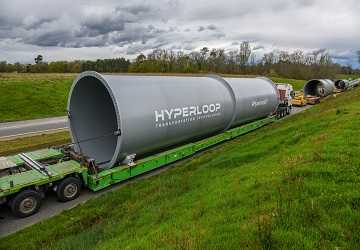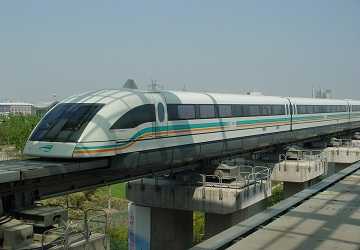6 Futuristic Transportation Technologies Changing the Way We Travel
How do you envision commuting in the future? Would you rather get stuck in traffic or fly over the city in a flying taxi?
Do you want to take the subway and reach your destination hundreds of kilometers away in just a few minutes? It's exciting just thinking about it.
Imagine how it will revolutionize the way we travel!
The emergence of this futuristic transportation technology is no longer just a fantasy in science fiction. Rather, it is a looming reality that promises myriad benefits.
It moves us closer to faster, safer, more efficient travel experiences, changes the way we perceive distance, and redefines our relationship to time and space.
These technologies can also address issues such as traffic congestion, pollution and transport inefficiencies.
Why Do We Need Innovation in Transportation Technology?
Here are the most compelling reasons for technologists to improve the way we travel:
·Mitigation: Urban areas are growing and so is transportation. We need technologies that efficiently use vertical space, bypass traffic, or speed up our commute.
·Environmental friendliness: Our current traffic system has a great impact on environmental pollution. We need greener, more sustainable solutions.
·Speed and Efficiency: In a fast-moving world, time is the most valuable commodity. We need technologies that can significantly reduce travel times.
·Safety: As human error is one of the leading causes of road accidents, automation and smart systems can significantly improve safety.
6 Future Transportation Technologies Coming Soon
It's time to take you on a fascinating journey. Here are six futuristic transportation technologies poised to change our travel experience.
1. Hyperloop
The Hyperloop, a concept popularized by Elon Musk, is a high-speed transportation system in which passenger pods travel through low-pressure tubes at speeds of up to 700 miles per hour.
The benefits are significant, including significantly reduced travel time and lower carbon emissions than traditional air travel.
For example, a trip from Los Angeles to San Francisco might take 30 minutes!

2. Self-Driving Cars
Picture this: you sit in your car, you enter your destination, and it drives you there while you sit back and relax.
Self-driving cars use artificial intelligence, sensors, and algorithms to navigate and control the car, improving travel comfort and reducing the risk of human-induced accidents.
3. Urban Air Mobility (UAM)
Forget sitting in traffic; fly over it! Urban air mobility refers to urban transportation systems that transport people by air.
Air taxis, drones and other electric vertical take-off and landing vehicles (eVTOL) fall into this category.
The potential benefits are huge: significantly less congestion and faster commutes.
4. Maglev Train
Maglev trains hover above tracks and are powered by magnetic fields, reducing friction and achieving incredible speeds.
advantage?
Due to the lack of physical contact between the train and the tracks, travel times are shorter, maintenance costs are lower, and the ride is smoother and quieter.

5. Personal Rapid Transit (PRT)
PRT systems are small autonomous vehicles that travel on a network of dedicated rails.
The system is designed to provide on-demand, non-stop transportation, reducing travel time and increasing convenience.
With lower emissions and a smaller footprint than traditional modes of transport, PRT is an environmentally friendly solution for urban transport.
6. Tunneling and Underground Transportation
Advances in tunneling technology now allow for the construction of extensive underground tunnel networks for high-speed transportation.
These tunnels provide an alternative to surface traffic congestion and open up new opportunities for subterranean travel and exploration.
Diploma
These six futuristic transportation technologies promise to transform travel from superfast trains to flying taxis.
While the path to full realization of these technologies is fraught with technical, regulatory, and societal challenges, the benefits they promise are worth pursuing.
Looking ahead, one thing is for sure: travel will be even more exciting!